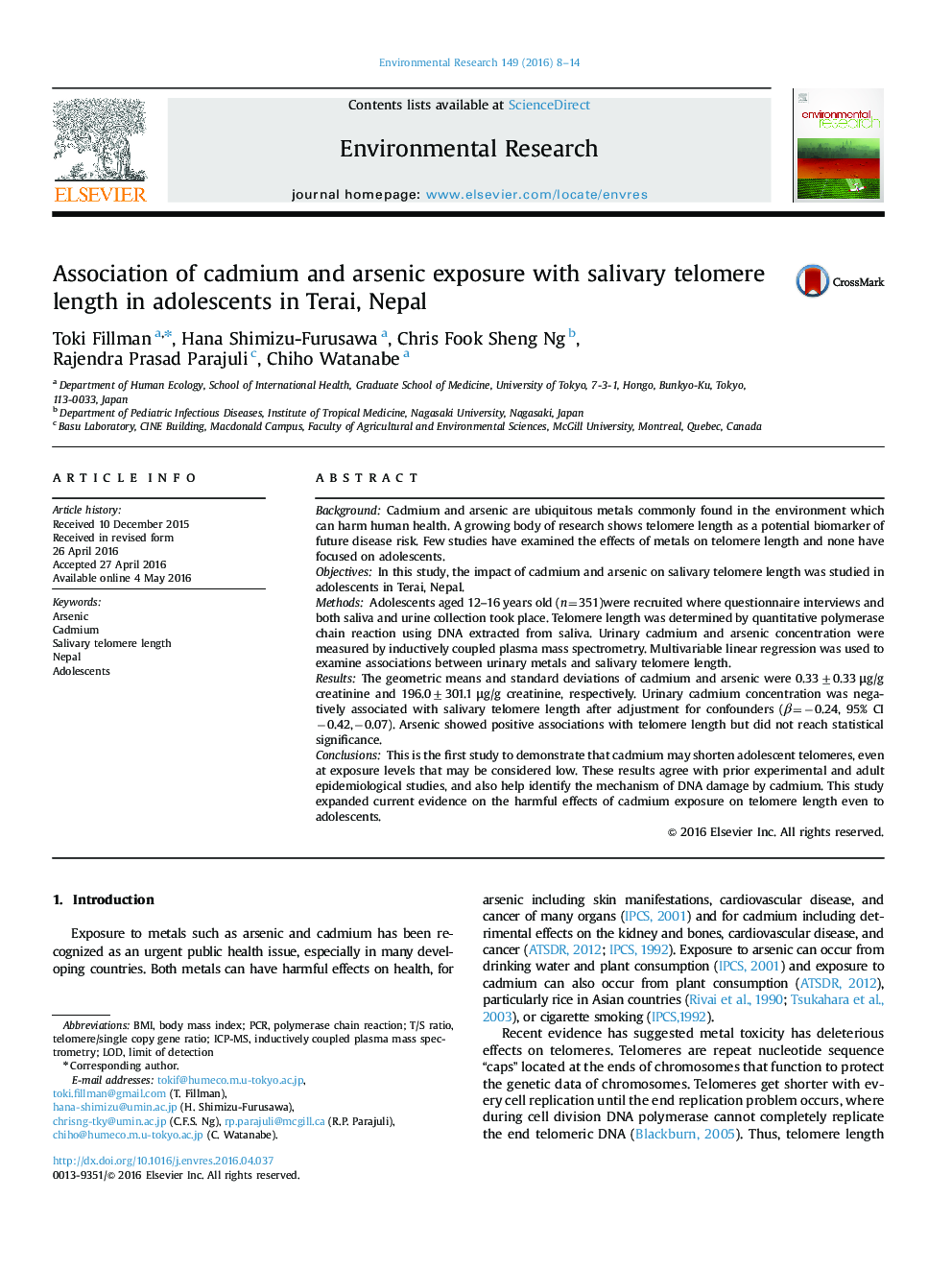| کد مقاله | کد نشریه | سال انتشار | مقاله انگلیسی | نسخه تمام متن |
|---|---|---|---|---|
| 6351419 | 1622554 | 2016 | 7 صفحه PDF | دانلود رایگان |
- This is the first study examining metal exposure on telomere length in adolescents.
- Urinary cadmium levels were similar to non-industrially polluted levels in Asia.
- Urinary arsenic levels were as high as groundwater arsenic polluted areas in Asia.
- Urinary cadmium was negatively associated with salivary telomere length.
- Urinary arsenic was not significantly associated with salivary telomere length.
BackgroundCadmium and arsenic are ubiquitous metals commonly found in the environment which can harm human health. A growing body of research shows telomere length as a potential biomarker of future disease risk. Few studies have examined the effects of metals on telomere length and none have focused on adolescents.ObjectivesIn this study, the impact of cadmium and arsenic on salivary telomere length was studied in adolescents in Terai, Nepal.MethodsAdolescents aged 12-16 years old (n=351)were recruited where questionnaire interviews and both saliva and urine collection took place. Telomere length was determined by quantitative polymerase chain reaction using DNA extracted from saliva. Urinary cadmium and arsenic concentration were measured by inductively coupled plasma mass spectrometry. Multivariable linear regression was used to examine associations between urinary metals and salivary telomere length.ResultsThe geometric means and standard deviations of cadmium and arsenic were 0.33±0.33 μg/g creatinine and 196.0±301.1 μg/g creatinine, respectively. Urinary cadmium concentration was negatively associated with salivary telomere length after adjustment for confounders (β=â0.24, 95% CI â0.42,â0.07). Arsenic showed positive associations with telomere length but did not reach statistical significance.ConclusionsThis is the first study to demonstrate that cadmium may shorten adolescent telomeres, even at exposure levels that may be considered low. These results agree with prior experimental and adult epidemiological studies, and also help identify the mechanism of DNA damage by cadmium. This study expanded current evidence on the harmful effects of cadmium exposure on telomere length even to adolescents.
Journal: Environmental Research - Volume 149, August 2016, Pages 8-14
